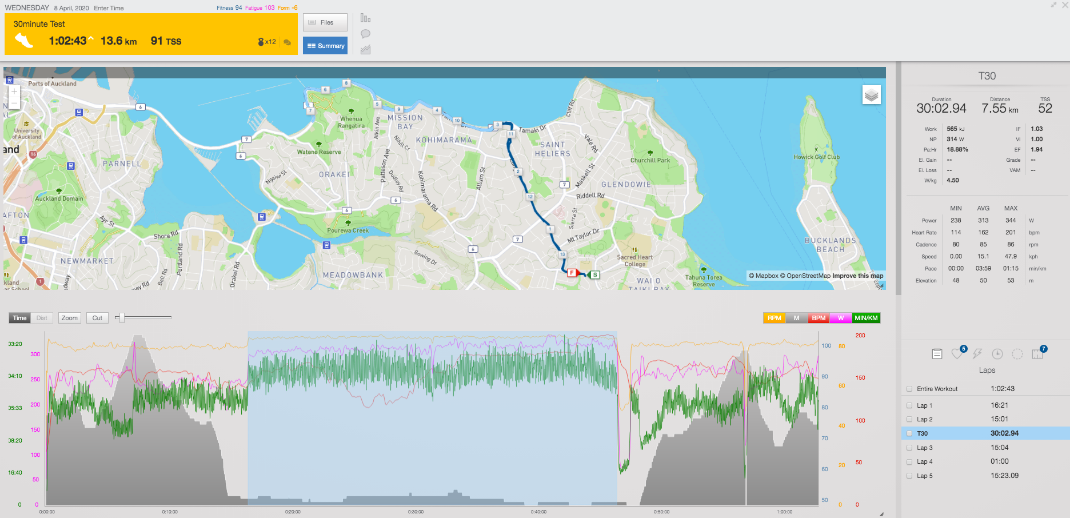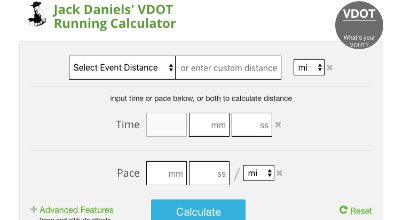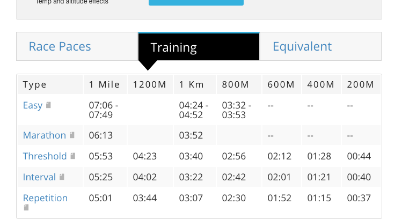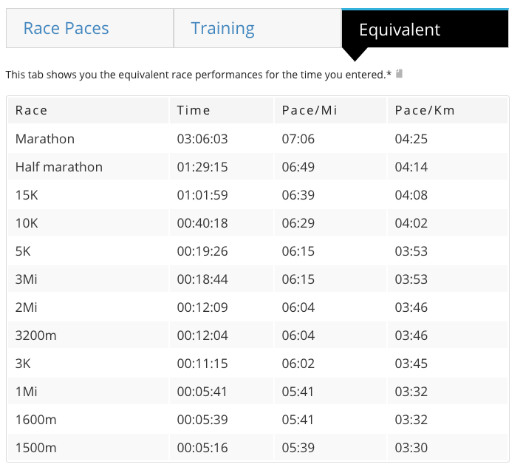Calculate your Run Training Paces
Using a race time (or 30 minute time trial) to determine your optimal run training pace zones. This is an update to an article written in 2015
Why find our Training Paces?
At Foot Traffic Coaching we want you to have a clear understanding of the correct pace (and therefore ‘zones’) you should be using for your running sessions. An awareness of this is just as important for the first time athlete as it is for the elite athlete. Training in the incorrect zones could set you up for a failure in the training plan. You run the risk of things such as developing an injury, becoming fatigued from over-reaching in training, doing junk miles and having wasted sessions or perhaps under training and not reaching your potential. These could all lead to the possibility that you may not achieve your goals. Basically for easy aerobic runs we want to make sure you aren’t running too fast and for interval runs we want to make sure you aren’t running too slow, both are common mistakes. A GPS enabled running watch allows you to monitor your pace properly and a basic one doesn’t really cost too much at all so It is well worth making the investment if you don’t already have one. Combine the watch with a STRYD Run Power Meter and take your training and racing to the next level.
What is the VDOT System?
The VDOT system allow runners to assess their current fitness levels based on recent race performances. It was developed over several years by world renowned exercise physiologist and running coach Jack Daniels and one of his runners Jimmy Gilbert. Athletes of all experience levels around the world use Daniels’ VDOT scales to determine how fast to perform what types of training in their quest for better performance. We have tried numerous pace/zone determining methods, and have found the VDOT system to be the most accurate and easiest to use. It will allow you to have a clear understanding of what pace you should train at because intervals, threshold runs, and even easy long runs and marathon-pace runs are best performed at specific percentages of your own VDOT. You will also gain an understanding of what you should be able to realistically achieve in a race if you pace yourself correctly.
Race or Time Trial are both useful
Because you use a recent race time, or Time Trial as your measured value, your VDOT takes into account your psychological input into racing. Rather that using lab tests to determine your ability level, we’re using your race performances, which are affected by your motivation and willingness to deal with discomfort. VDOT reflects everything that you as an individual calls on to perform in a race or a Time Trial.
Make sure that the race from which you’re predicting the VDOT was run on a (relatively) flat course, with good footing and under good weather conditions; when using a race run in difficult weather or terrain conditions, time is affected negatively and the VDOT will be lower than it should be.
If you have a 30min TT in your plan you will need to take the distance you ran and calculate your Training Paces from that. It's easy to do if you use the VDOT Calculator.
Example
Let's use the example of a run I did recently....
As you can see I ran 7.55km for my 30min effort. It was actually 2 seconds longer as I wanted to make sure it wasn't less than 30mins.

7.55km in 30mins means I ran at 3:59/km. But what does this mean to my Training Paces?

Using the VDOT Calculator I can enter the Custom distance and time in the fields then click calulate, as below. Make sure you change it to Km, from miles as this has a huge impact on the information you get.
The calculator then figures out my training paces from the input values. Here you can see the my EASY run pace is 5:00-5:31/km. You can also see the target pace for Threshold, Interval and Repetition sessions, as well as a Marathon pace for your faster long runs.


Click on the 'Equivalent' tab and see what pace you are likely to be able to complete various distances in based on these values. You can see a Marathon time for me would be 3:06:03. If I want to go under 3:00 for a marathon then I need to do a bit of work on my sustained speed, and that's what training is all about.
See what's possible
Have a bit of a play with other distances for your 30min effort, or perhaps a goal race time for a specific duration, see what sort of pace is required to do various distances.
For example, if I ran 1km further in the 30min test, than I did today, it would equate to a marathon time 23mins quicker, of 2:43:22. That's quite a jump and I would have to do a lot of quality training to event get close to that. It's great to have that perspective though isn't it.
This is such a handy tool to use, and the 30min Test set is a very achievable session for any fit and uninjured athlete. It can easily be slotted into your Training Plan after a couple of lighter training days, so you can get a gauge of where you are at in your training progress. It's much better than just running blind and hoping you're on track.
I hope you enjoyed the 30min Test set as much as I did.

